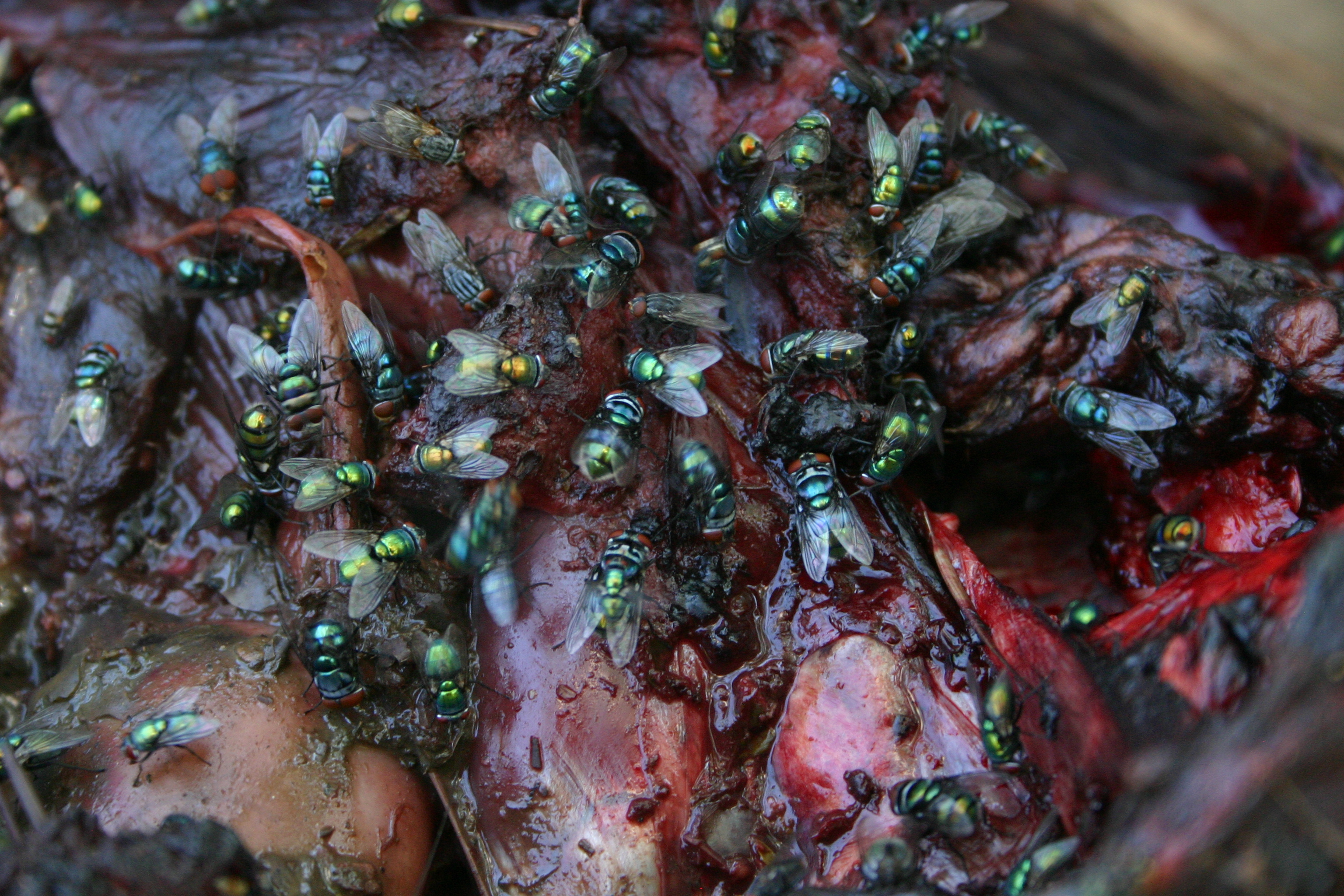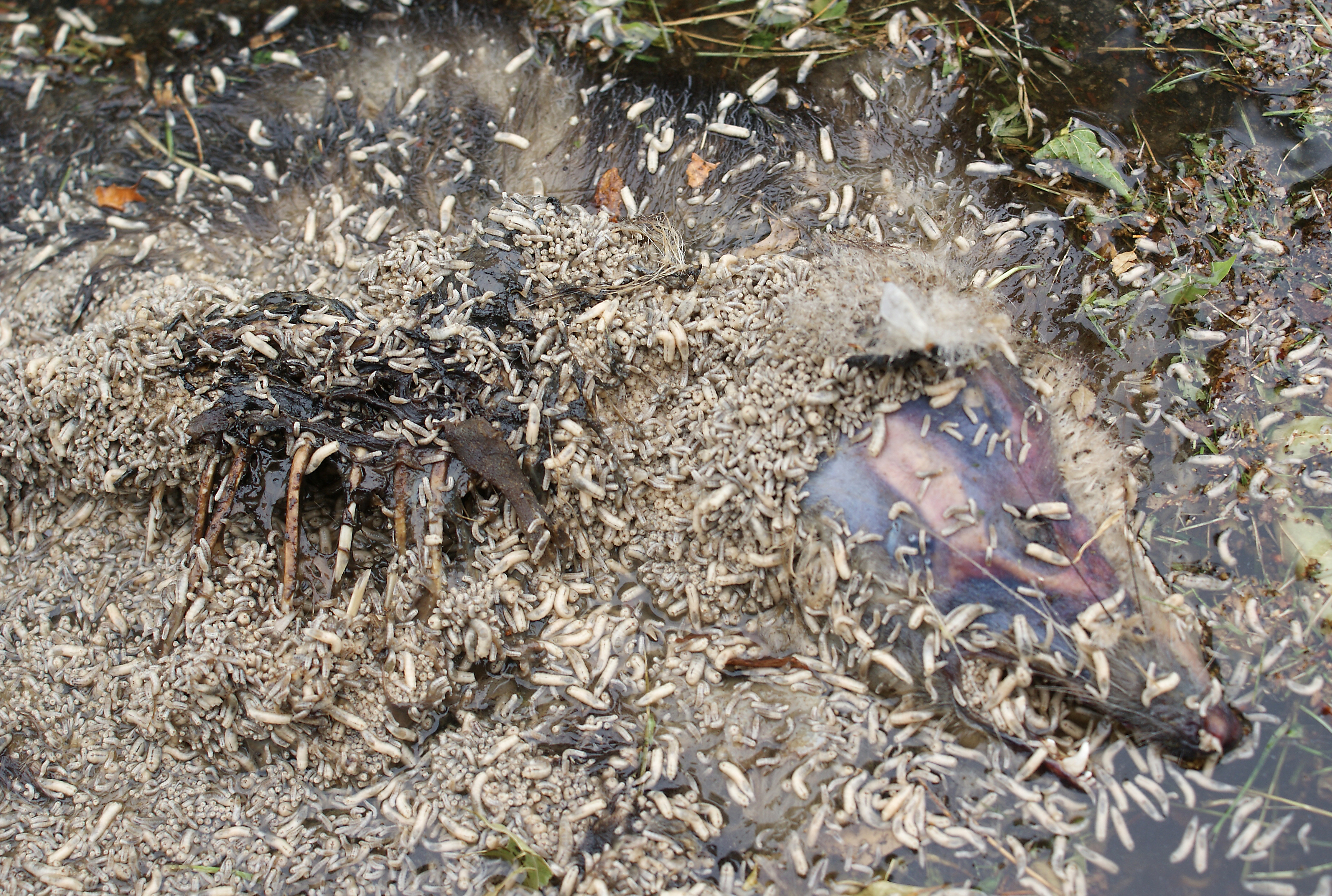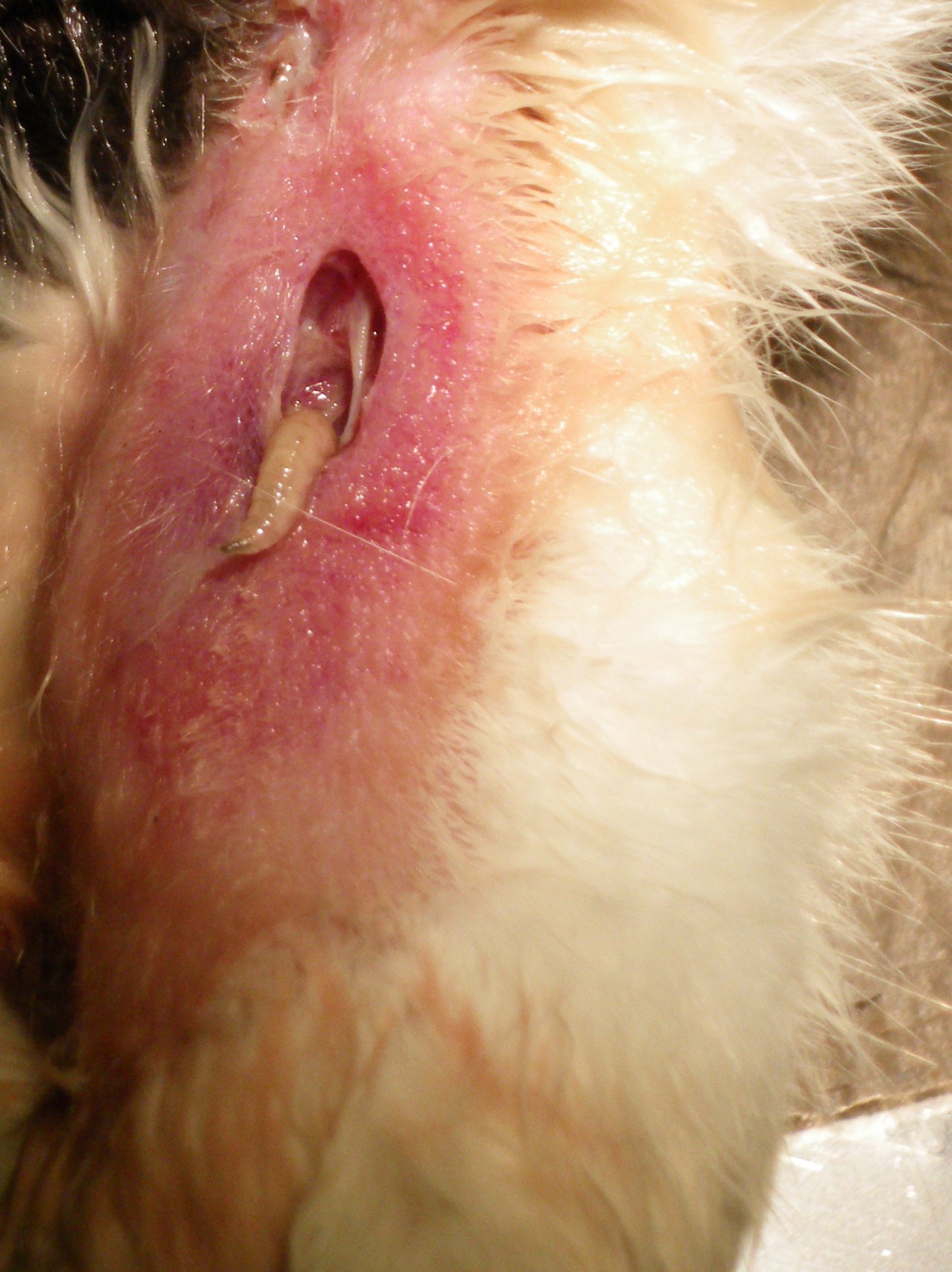|
Chrysomya Villeneuvi
''Chrysomya villeneuvi'', or hairy maggot, is a South East Asian fly species of forensic importance because the maggots of this species have been collected from human corpses. Study of the feeding behaviour of the hairy maggot is also underway to establish if they can be of possible medical importance in the future. ''Chrysomya villeneuvi'' belongs in the Dipteran family Calliphoridae. This family is composed of the blowflies, carrion flies and cluster flies. This genus includes '' Chrysomya bezziana'' and '' Chrysomya putoria'', both of which are obligate parasite Parasitism is a Symbiosis, close relationship between species, where one organism, the parasite, lives on or inside another organism, the Host (biology), host, causing it some harm, and is Adaptation, adapted structurally to this way of lif ...s of mammals and cause myiasis. References Calliphoridae Insects described in 1922 {{Calliphoridae-stub ... [...More Info...] [...Related Items...] OR: [Wikipedia] [Google] [Baidu] |
Asia
Asia (, ) is one of the world's most notable geographical regions, which is either considered a continent in its own right or a subcontinent of Eurasia, which shares the continental landmass of Afro-Eurasia with Africa. Asia covers an area of , about 30% of Earth's total land area and 8.7% of Earth's total surface area. The continent, which has long been home to the majority of the human population, was the site of many of the first civilizations. Its 4.7 billion people constitute roughly 60% of the world's population. In general terms, Asia is bounded on the east by the Pacific Ocean, on the south by the Indian Ocean, and on the north by the Arctic Ocean. The border of Asia with Europe is a historical and cultural construct, as there is no clear physical and geographical separation between them. It is somewhat arbitrary and has moved since its first conception in classical antiquity. The division of Eurasia into two continents reflects East–West cultural, ling ... [...More Info...] [...Related Items...] OR: [Wikipedia] [Google] [Baidu] |
Forensic Entomology
Forensic entomology is a field of forensic science that uses insects found on corpses to help solve criminal cases. This includes the study of insect types commonly associated with cadavers, their respective life cycles, their ecological presences in a given environment, as well as the changes in insect assemblage with the progression of decomposition. Insect succession patterns are identified based on the time a given species of insect spends in a given developmental stage, and how many generations have been produced since the insect's introduction to a given food source. Insect development alongside environmental data such as temperature and vapor density, can be used to estimate the time since death, due to the fact that flying insects are attracted to a body immediately after death. Forensic entomology can also provide clues about possible movement of the body after death, and the presence of antemortem trauma. The identification of postmortem interval (PMI) to aid in death ... [...More Info...] [...Related Items...] OR: [Wikipedia] [Google] [Baidu] |
Maggot
A maggot is the larva of a fly (order Diptera); it is applied in particular to the larvae of Brachycera flies, such as houseflies, cheese flies, and blowflies, rather than larvae of the Nematocera, such as mosquitoes and crane flies. Entomology "Maggot" is not a technical term and should not be taken as such; in many standard textbooks of entomology, it does not appear in the index at all. In many non-technical texts, the term is used for insect larvae in general. Other sources have coined their own definitions; for example: "The term applies to a grub when all trace of limbs has disappeared" and "Applied to the footless larvae of Diptera".Smith, John. BExplanation of terms used in entomology Brooklyn Entomological Society, 1906. Additionally, in ''Flies: The Natural History and Diversity of Diptera'', the author claims maggots "are larvae of higher Brachycera (Cyclorrhapha)." Maggot-like fly larvae are of significance in ecology and medicine; among other roles, vario ... [...More Info...] [...Related Items...] OR: [Wikipedia] [Google] [Baidu] |
Cadaver
A cadaver or corpse is a dead human body that is used by medical students, physicians and other scientists to study anatomy, identify disease sites, determine causes of death, and provide tissue to repair a defect in a living human being. Students in medical school study and dissect cadavers as a part of their education. Others who study cadavers include archaeologists and arts students. The term ''cadaver'' is used in courts of law (and, to a lesser extent, also by media outlets such as newspapers) to refer to a dead body, as well as by recovery teams searching for bodies in natural disasters. The word comes from the Latin word ''cadere'' ("to fall"). Related terms include ''cadaverous'' (resembling a cadaver) and '' cadaveric spasm'' (a muscle spasm causing a dead body to twitch or jerk). A cadaver graft (also called “postmortem graft”) is the grafting of tissue from a dead body onto a living human to repair a defect or disfigurement. Cadavers can be observed for their ... [...More Info...] [...Related Items...] OR: [Wikipedia] [Google] [Baidu] |
Diptera
Flies are insects of the order Diptera, the name being derived from the Greek δι- ''di-'' "two", and πτερόν ''pteron'' "wing". Insects of this order use only a single pair of wings to fly, the hindwings having evolved into advanced mechanosensory organs known as halteres, which act as high-speed sensors of rotational movement and allow dipterans to perform advanced aerobatics. Diptera is a large order containing an estimated 1,000,000 species including horse-flies, crane flies, hoverflies and others, although only about 125,000 species have been described. Flies have a mobile head, with a pair of large compound eyes, and mouthparts designed for piercing and sucking (mosquitoes, black flies and robber flies), or for lapping and sucking in the other groups. Their wing arrangement gives them great maneuverability in flight, and claws and pads on their feet enable them to cling to smooth surfaces. Flies undergo complete metamorphosis; the eggs are often laid on the l ... [...More Info...] [...Related Items...] OR: [Wikipedia] [Google] [Baidu] |
Calliphoridae
The Calliphoridae (commonly known as blow flies, blow-flies, carrion flies, bluebottles, greenbottles, or cluster flies) are a family of insects in the order Diptera, with almost 1,900 known species. The maggot larvae, often used as fishing bait, are known as gentles. The family is known to be polyphyletic, but much remains disputed regarding proper treatment of the constituent taxa, some of which are occasionally accorded family status (e.g., Bengaliidae and Helicoboscidae). The name blowfly comes from an older English term for meat that had eggs laid on it, which was said to be flyblown. The first known association of the term "blow" with flies appears in the plays of William Shakespeare: '' Love's Labour's Lost'', '' The Tempest'', and ''Antony and Cleopatra''. Description Characteristics Calliphoridae adults are commonly shiny with metallic colouring, often with blue, green, or black thoraces and abdomens. Antennae are three-segmented and aristate. The aristae are pl ... [...More Info...] [...Related Items...] OR: [Wikipedia] [Google] [Baidu] |
Chrysomya Bezziana
''Chrysomya bezziana'', also known as the Old World screwworm fly or screwworm, is an obligate parasite of mammals. Obligate parasitic flies require a host to complete their development. Named to honor the Italian entomologist Mario Bezzi, this fly is widely distributed in Asia, tropical Africa, India, and Papua New Guinea. The adult can be identified as metallic green or blue with a yellow face and the larvae are smooth, lacking any obvious body processes except on the last segment. The fly feeds on decaying organic matter, while the fly larvae feed on the living tissue of warm-blooded mammals as opposed to necrotic tissue that many other fly larvae feed on. Since the larvae can cause permanent tissue damage, ''C. bezziana'' has led to much public concern. Management procedures include both prevention of colonization of the fly and treatment of a current infestation. ''Chrysomya bezziana'' belongs to the genus '' Chrysomya,'' which contains species like '' Chrysomya rufifac ... [...More Info...] [...Related Items...] OR: [Wikipedia] [Google] [Baidu] |
Chrysomya Putoria
''Chrysomya putoria'', also known as the tropical African latrine blowfly, is a fly species belonging to the blowfly family, Calliphoridae''.'' ''C. putoria'' is native to Africa and has recently spread to the Americas. These flies pose significant health risks, especially due to their close association with human settlements. Adult flies can carry pathogens, while larvae may cause myiasis by growing and feeding on the flesh of domestic animals and humans. Other myiasis-causing flies in the same genus are ''Chrysomya bezziana, C. bezziana'' and ''Chrysomya megacephala, C. megacephala''. ''C. putoria'' and other flies that feed on decomposing tissue are used as important tools in forensic entomology to establish the post-mortem interval, or the time elapsed since death. Description The adult body is long, slightly larger than the average housefly, and metallic green, with an occasional tinge of metallic dark blue or bronze. The face of ''C. putoria'' is generally dark in color. ... [...More Info...] [...Related Items...] OR: [Wikipedia] [Google] [Baidu] |
Parasite
Parasitism is a Symbiosis, close relationship between species, where one organism, the parasite, lives on or inside another organism, the Host (biology), host, causing it some harm, and is Adaptation, adapted structurally to this way of life. The entomologist E. O. Wilson has characterised parasites as "predators that eat prey in units of less than one". Parasites include single-celled protozoans such as the agents of malaria, sleeping sickness, and amoebic dysentery; animals such as hookworms, lice, mosquitoes, and vampire bats; fungi such as Armillaria mellea, honey fungus and the agents of ringworm; and plants such as mistletoe, dodder, and the Orobanchaceae, broomrapes. There are six major parasitic Behavioral ecology#Evolutionarily stable strategy, strategies of exploitation of animal hosts, namely parasitic castration, directly transmitted parasitism (by contact), wikt:trophic, trophicallytransmitted parasitism (by being eaten), Disease vector, vector-transmitted paras ... [...More Info...] [...Related Items...] OR: [Wikipedia] [Google] [Baidu] |
Myiasis
Myiasis is the parasitic infestation of the body of a live animal by fly larvae (maggots) which grow inside the host while feeding on its tissue. Although flies are most commonly attracted to open wounds and urine- or feces-soaked fur, some species (including the most common myiatic flies—the botfly, blowfly, and screwfly) can create an infestation even on unbroken skin and have been known to use moist soil and non-myiatic flies (such as the common housefly) as vector agents for their parasitic larvae. Because some animals (particularly non-native domestic animals) cannot react as effectively as humans to the causes and effects of myiasis, such infestations present a severe and continuing problem for livestock industries worldwide, causing severe economic losses where they are not mitigated by human action. Although typically a far greater issue for animals, myiasis is also a relatively frequent disease for humans in rural tropical regions where myiatic flies thrive, and ... [...More Info...] [...Related Items...] OR: [Wikipedia] [Google] [Baidu] |




_(10144905255).jpg)


